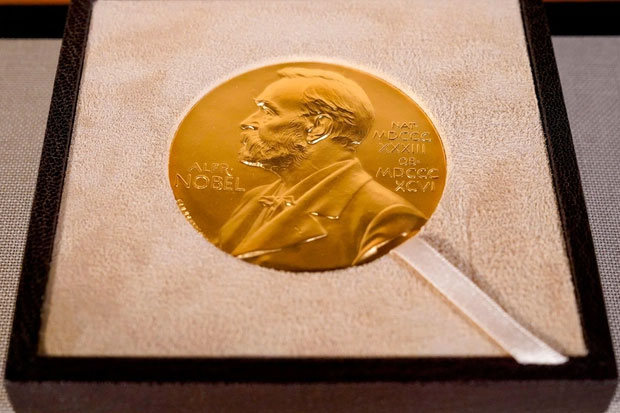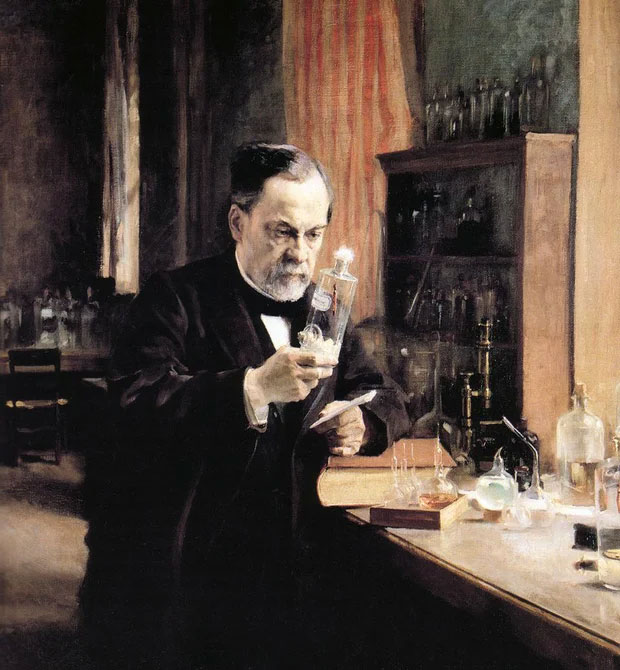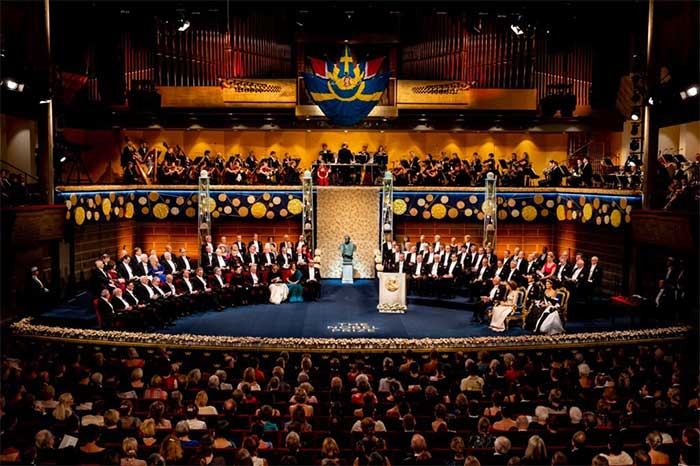Every October, the Nobel Committee in Sweden and Norway announces the winners of these prestigious awards across various categories in the fields of science, literature, economics, and peace.
A total of 6 Nobel Prizes will be awarded in 6 categories to recognize the outstanding contributions of individuals or organizations in their respective fields.
These categories include Physiology or Medicine, Physics, Chemistry, Economic Sciences, Literature, and Peace. The first five categories are evaluated by the Nobel Committee in Sweden, while the Peace Prize is awarded by the Norwegian Nobel Committee.

Nobel medal for the winners.
In the past two years of the pandemic, the organization of the Nobel Prize has changed somewhat due to the situation. In 2020 and 2021, the award ceremonies were held digitally, and the ceremony in Oslo (Norway) for the Nobel Peace Prize was also conducted with restrictions.
This year, the winners are once again invited to Stockholm and Oslo to receive their awards as usual in December. The recipients of the 5 categories of Physiology or Medicine, Physics, Chemistry, Literature, and Peace have already been announced.
In addition to a certificate and a gold medal featuring the founder, Alfred Nobel, the winners also receive a cash prize that varies each year. This year, the winners will receive 10 million Swedish kronor (SEK), equivalent to approximately 900,000 USD for each category (if there are multiple winners, the prize will be divided equally).
Where does this annual prize money come from, and who pays for it?
The origin of the Nobel Prize comes from the person it is named after – the outstanding scientist and Swedish millionaire Alfred Nobel. He is famous for inventing dynamite and donated nearly all of his fortune to the Nobel Foundation.
Before he passed away in 1896, he left a will specifying that 94% of his assets, amounting to 31 million SEK (equivalent to 4,223,500 USD at that time), should go to the foundation. This amount is equivalent to nearly 1.8 billion SEK (160 million USD) today.
In his will, Alfred Nobel specified that his assets should be invested in a fund consisting of safe securities.
Most of the assets were linked to Nobel’s holdings in the Russian oil company Baku Petroleum and hundreds of ammunition and explosives factories in Europe, North and South America, Australia, and South Africa. Nobel also had significant stakes in various mining companies, including gold mines, as well as revenue from his 355 international patents.

Alfred Nobel – the founder of one of the world’s most prestigious awards.
Additionally, he owned a yacht, a thoroughbred horse farm, and three valuable properties: the Mio Nido villa in San Remo, an apartment in Paris, and the Björkborn villa in Karlskoga (which he never lived in). The annual interest from his investments is used for the awards, as well as for the organizing committee by the Nobel Foundation, a private organization that has been operating since 1900.
Although Nobel’s requirements may have suited the time and place he lived in, for many decades since his death, the Nobel Foundation and its leaders have adjusted their approach to align with more modern investment styles.
The goal is to maintain stability in the ability to award cash prizes equivalent to or greater than before. However, the long history of the Nobel Foundation and its investments indicates that there have been significant changes in the value of the prizes over time.
At the first award ceremony in 1901, the amount for each category was 150,000 SEK, which is nearly 9 million SEK in 2020 (about 1 million USD). In recent years, the amount awarded has also been comparable after adjusting for inflation.
However, in the years following 1901 and into the mid-21st century, the prizes were sometimes not as substantial, partly due to the investments made by the Nobel Foundation’s managers.
For example, the Nobel Prize in 1919 was only 133,127 SEK or 2.4 million SEK (over 200,000 USD today). There were also times when the prize increased during the Great Depression of the 1930s but returned to that level in the 1940s and 1950s.
The reason was due to the fluctuations of the times, such as the World Wars and ineffective investments. By 1953, the Nobel Foundation was granted additional privileges such as tax exemptions and the freedom to invest in the stock market and real estate, changing the investment strategy from the original to ensure profitability.

Scene from the Nobel Prize ceremony in 2019 in Stockholm, Sweden.
In the 1990s, especially in the new century, the cash value of the Nobel Prizes increased significantly, reaching 10 million SEK in 2001 (12.5 million SEK as of December 2019) and remained there for many years, although it has currently decreased to 9 million.
At this time, the asset managers began using hedge funds to increase capital. However, with the 2012 prize, the Nobel Foundation announced that it would cut the cash prize by 20% to maintain an appropriate capital level. At that time, the foundation also considered fundraising efforts to restore the value of the prize.
In 2020, the Nobel Prize amount was slightly increased by 1 million SEK to 10 million SEK. The main reason was that the foundation’s investment capital had increased from 3.6 billion SEK in 2012 to 4.6 billion SEK in 2020.
According to the Nobel Foundation’s annual report, the foundation’s goal is to achieve a minimum annual return higher than inflation by at least 3.5%. The foundation’s investment portfolio consists of stocks, fixed income, real assets, and alternative assets (hedge funds). The investment structure is approximately 55% in stocks, 10% in fixed income, 10% in real assets, and 25% in alternative assets.
Currently, Ulrika Bergman serves as the Chief Investment Officer (CIO), having joined the organization in 2017. Since her predecessor joined the foundation in 2012, the foundation has worked to shift investments toward holding active assets, aiming to reduce fees while maintaining effectiveness.
Despite certain fluctuations in the prize amount each year due to the investment results of the Nobel Foundation, the prize is currently stable at around 1 million USD, and with careful investments to ensure returns greater than inflation of 3.5% each year, the foundation will continue to sustain this award level in the long term.
Why is there no Nobel Prize for Mathematics?
Another question that many may wonder is why half of the Nobel Prize categories are scientific (Physiology or Medicine, Physics, Chemistry), while a subject like mathematics is absent?
The reason is actually quite simple. During his lifetime, Nobel was known to prefer experimentation over theory. As an inventor and industrialist, he did not create an award for mathematics simply because he was not particularly interested in mathematics or theoretical science.
His will speaks of awards for “inventions or discoveries” that bring the greatest practical benefits to humanity. This philosophy is also reflected in the Physics category, where this award has always prioritized advancements in experimental physics over theoretical physics.
This year, the Nobel Prize in Physics was jointly awarded to three scientists researching quantum technology. Alain Aspect, John F. Clauser, and Anton Zeilinger conducted experiments that “shake the foundations of how we interpret measurement” – the Nobel Physics Committee stated.
- 2022 Nobel Prize in Economics honors research on financial crises
- One individual, two organizations win the 2022 Nobel Peace Prize
- French author wins the 2022 Nobel Prize in Literature
- Molecular research wins the 2022 Nobel Prize in Chemistry
- Three scientists receive the 2022 Nobel Prize in Physics for quantum research
- Research on the origins of human genes wins the 2022 Nobel Prize in Physiology or Medicine


















































